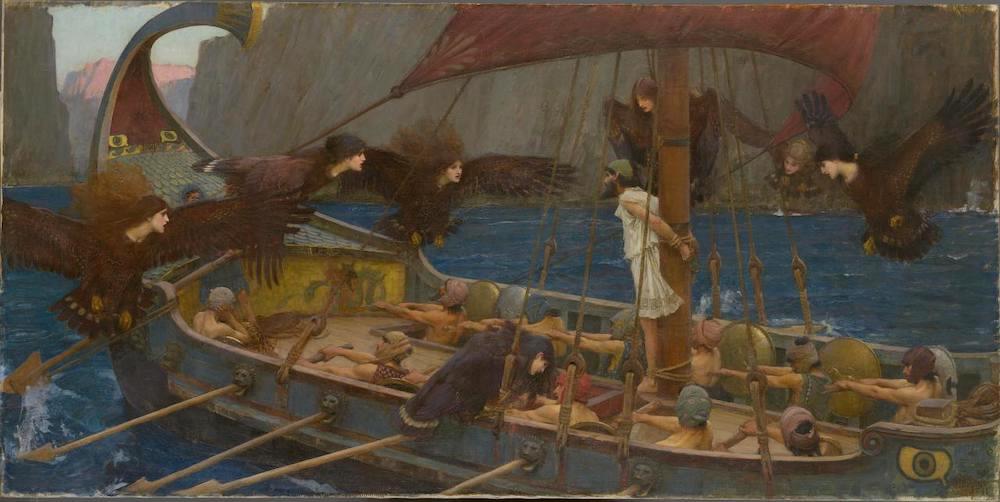
Ulysses and the Sirens by John William Waterhouse. 1891. Oil on canvas. 100.6 × 202.0 cm. Collection: National Gallery of Victoria, Melbourne, which purchased it in 1891. It is described on the Gallery website as being in the public domain. Text added by Jacqueline Banerjee.
"At the time of Sir Hubert von Herkomer’s purchase of this picture for the National Gallery of Victoria, in June 1891, the Ulysses was only the second work by John William Waterhouse to be acquired for a public gallery" ("Ulysses and the Sirens"). Christopher Wood describes it as "masterpiece," and "the most outstanding of all Victorian pictures based on Homer," saying that it has a "weird, menacing and nightmarish" (230) dramatic intensity almost unique in the painter's work. Like the Tate Lady of Shalott, it combines romance and realism in Waterhouse's characteristic way. Wood explains the subject of Ulysses and the Sirens as follows:
It depicts the moment when Ulysses and his companions are threatened on their voyage home by the sirens, female monsters who lure men to destruction by their song. To counter them, Ulysses stopped up the ears of his men with wax, and had himself tied to the mast. All around flap the sirens, huge birds with the faces of beautiful women. Waterhouse took this idea of sirens from a Greek vase in the British Museum, but the figures of the birds also recall the Egyptian symbol of the winged scarab. The boat, the frightened figures of the sailors, and the bleakly rocky setting are all painted with strong realism, and the intrusion of the sirens gives the picture a sinister and terrifying effect. [230]
Related Material
- Women as Vampires, Harpies, Sirens, Mermaids
- Ulysses and the Sirens, by Herbert James Draper, c.1909
- The Sirens, by Frederick Pickersgill
Bibliography
Hobson, Anthony. The Art and Life of J. W. Waterhouse, RA, 1849-1917. London: Studo Vista/Christie's, 1980.
"Ulysses and the Sirens." National Gallery of Victoria. Web. 15 March 2019.
Wood, Christopher. Olympian Dreamers: Victorian Classical Painters. London: Constable, 1983.
Last modified 20 August 2021 (related material added)